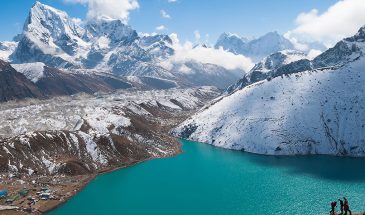Everest Region Trekking
Welcome to the Everest region, a majestic and awe-inspiring part of the world located in the eastern part of Nepal. The region is famous for its towering peaks, stunning landscapes, and rich cultural heritage.
Trekking in the Everest region is a popular activity among adventure enthusiasts, offering a unique opportunity to experience the natural beauty of the Himalayas up close. The region is home to some of the highest mountains in the world, including Mount Everest, which stands at a staggering height of 8,848 meters.
The geography of the Everest region is characterized by rugged terrain, snow-capped peaks, deep valleys, and glaciers. The region is part of the Himalayan mountain range and is located at an altitude of 2,000 to 8,848 meters above sea level. The landscape is dominated by rocky cliffs, steep slopes, and alpine forests, which provide a natural habitat for a wide variety of flora and fauna.
The weather and climate in the Everest region can be unpredictable and extreme due to its high altitude and location. The region experiences four distinct seasons: spring, summer, autumn, and winter. The best time to visit the region is during the spring and autumn months when the weather is relatively mild, and the skies are clear, providing spectacular views of the mountains. During the winter months, the region experiences heavy snowfall, making trekking difficult and dangerous.
The people of the Everest region are primarily of Sherpa ethnicity, who are renowned for their mountaineering skills and hospitality. The Sherpa people have a rich cultural heritage and are deeply connected to the mountains, which they consider sacred. The region is also home to many other ethnic groups, including Tamang, Rai, and Gurung, each with their unique customs and traditions.
The culture of the Everest region is deeply influenced by Tibetan Buddhism, with many ancient monasteries and temples scattered throughout the region. The famous Tengboche monastery is one of the most significant religious sites in the region, attracting thousands of visitors each year. The region also has a rich tradition of music, dance, and festivals, which are an important part of Sherpa culture.
In conclusion, the Everest region is a unique and fascinating part of the world, offering a rare opportunity to experience the natural beauty and rich cultural heritage of the Himalayas. Whether you’re an adventure enthusiast, a nature lover, or a cultural enthusiast, the Everest region is a must-visit destination that will leave you with memories that last a lifetime.
-
-
-
-
Everest Base Camp Via Gokyo Trek
From $1,270.0014 Night/ 15 Days Days




